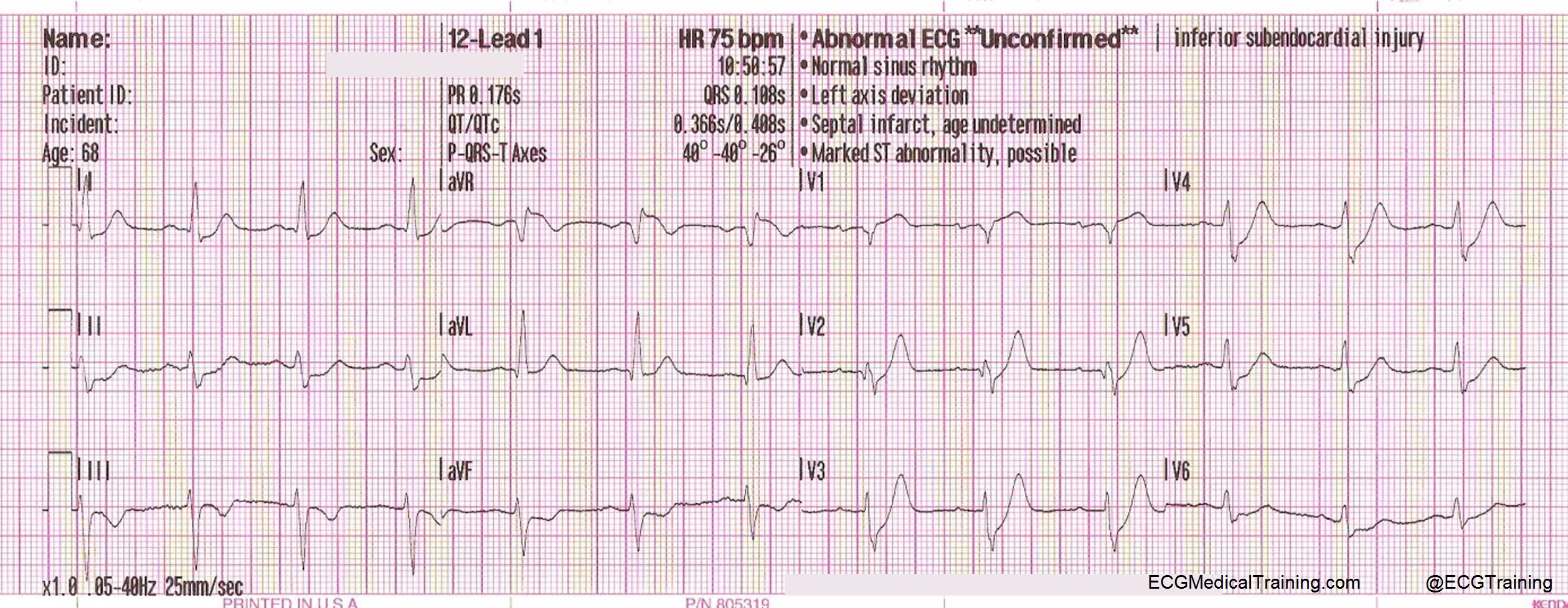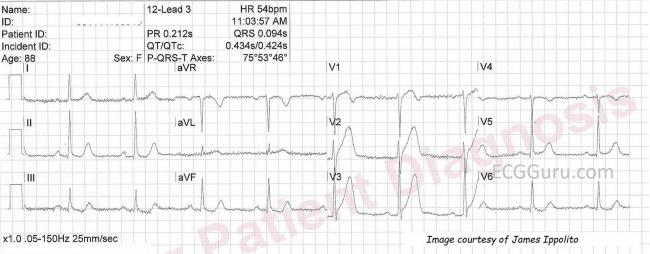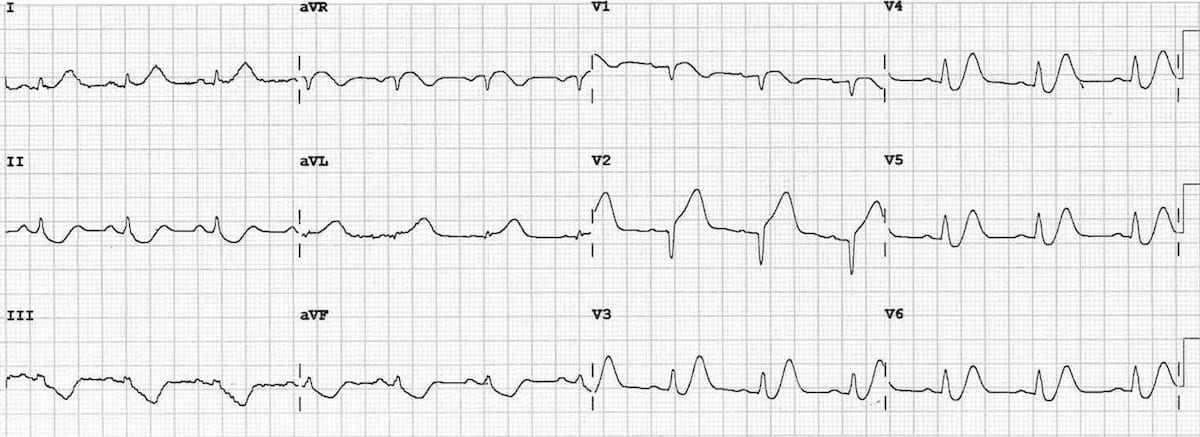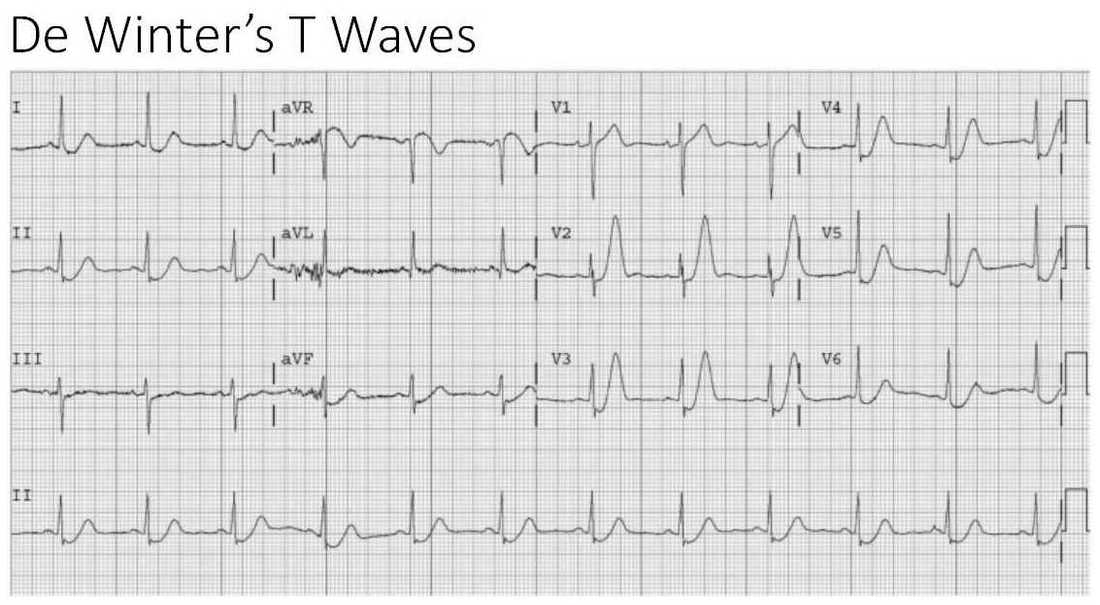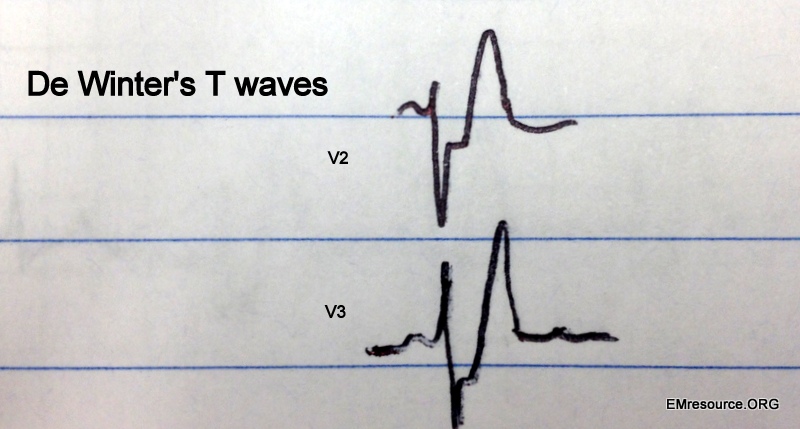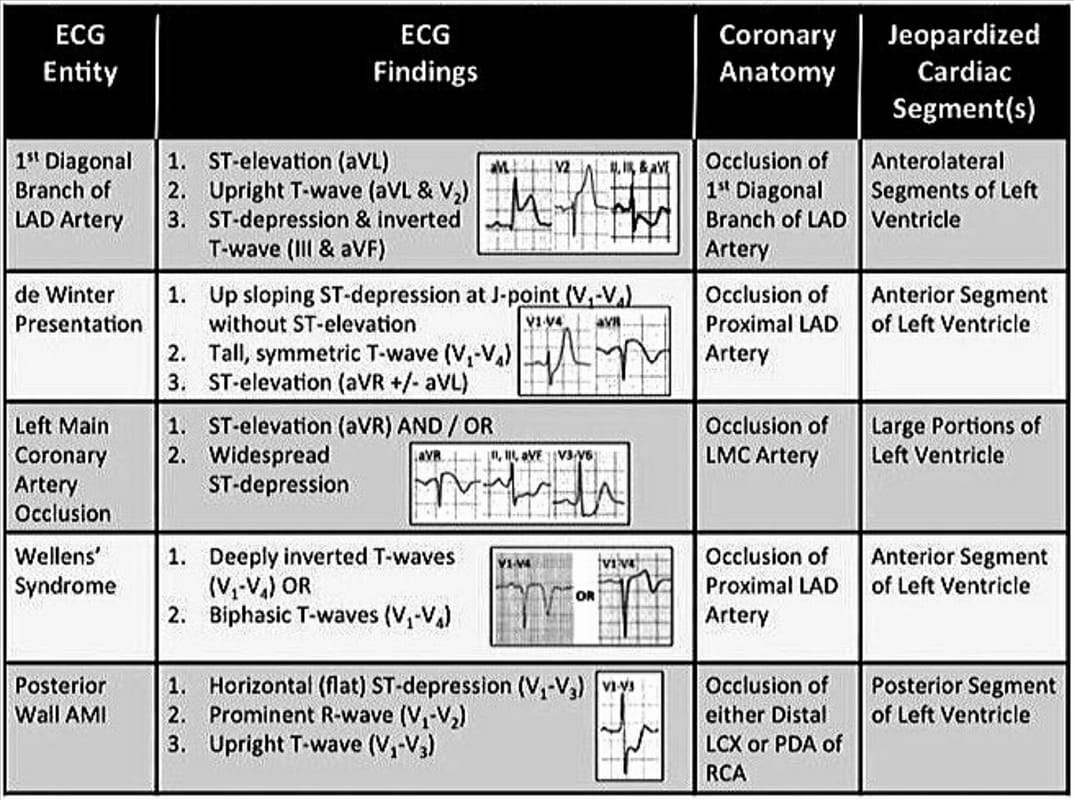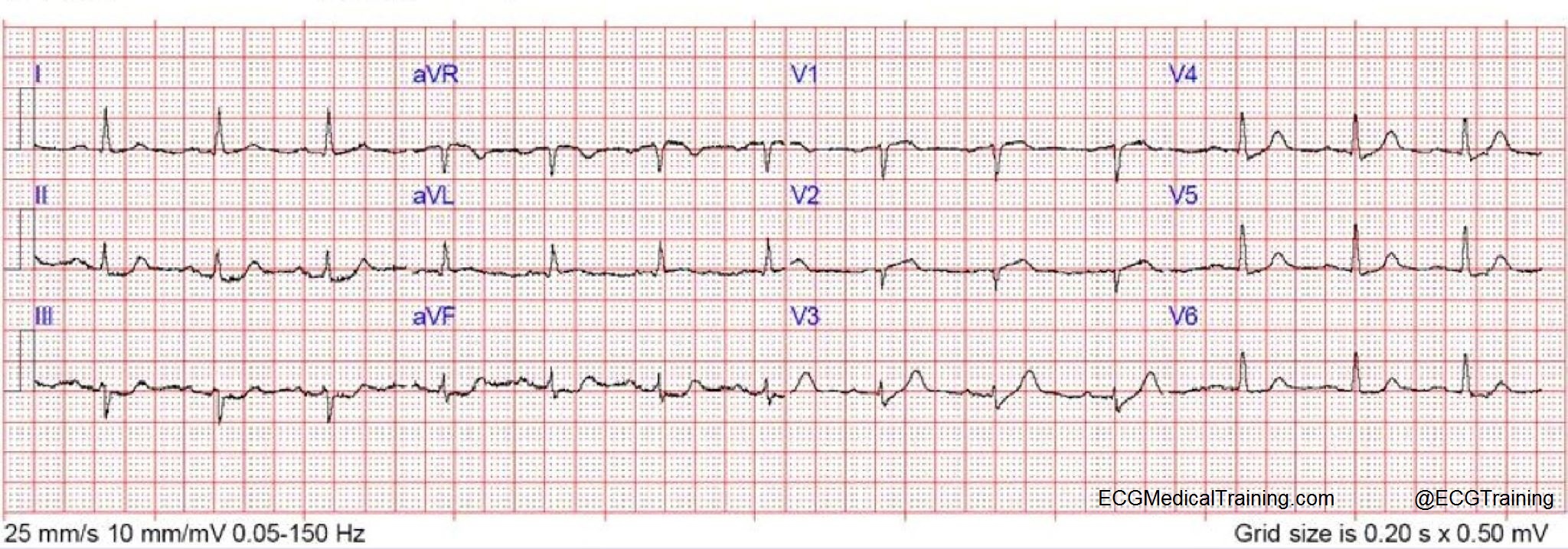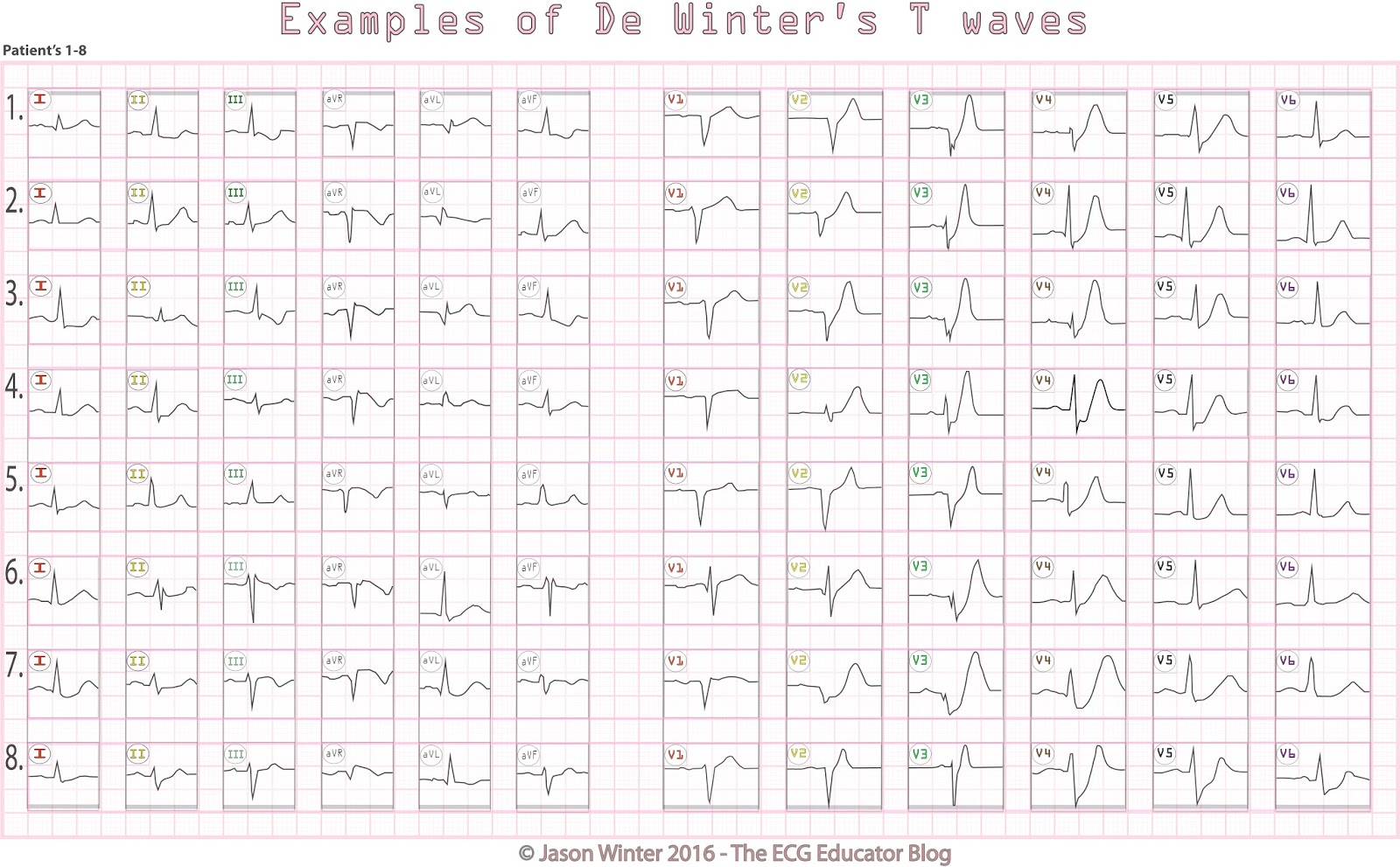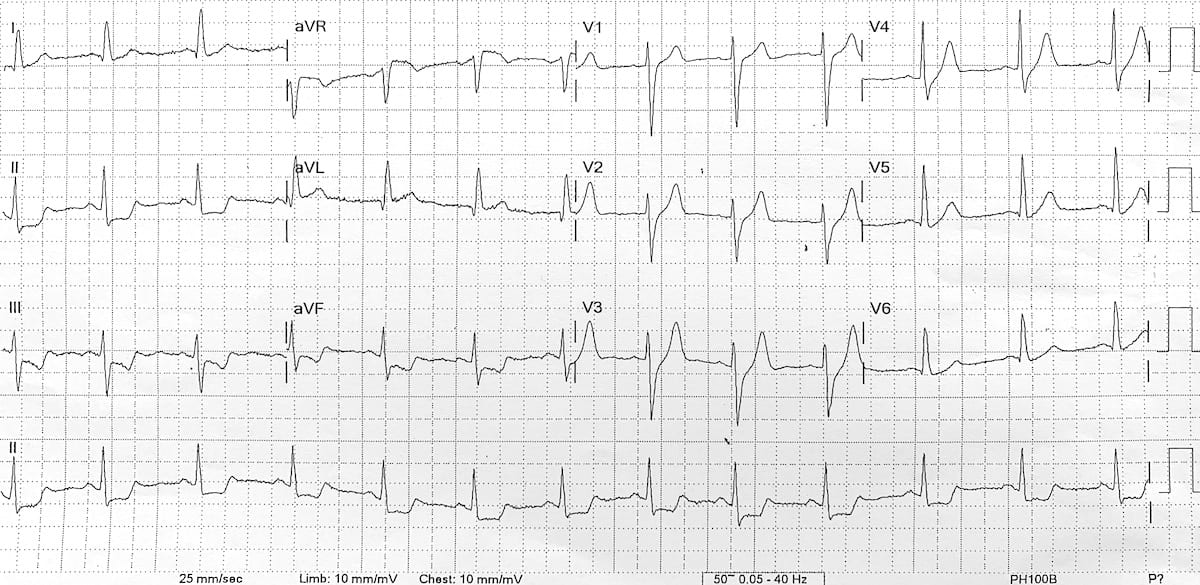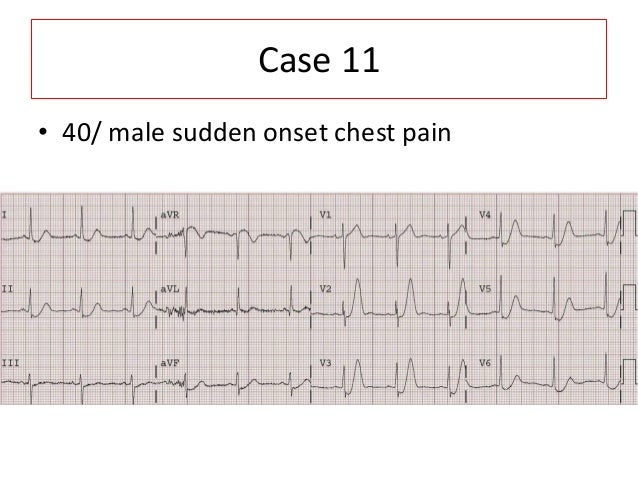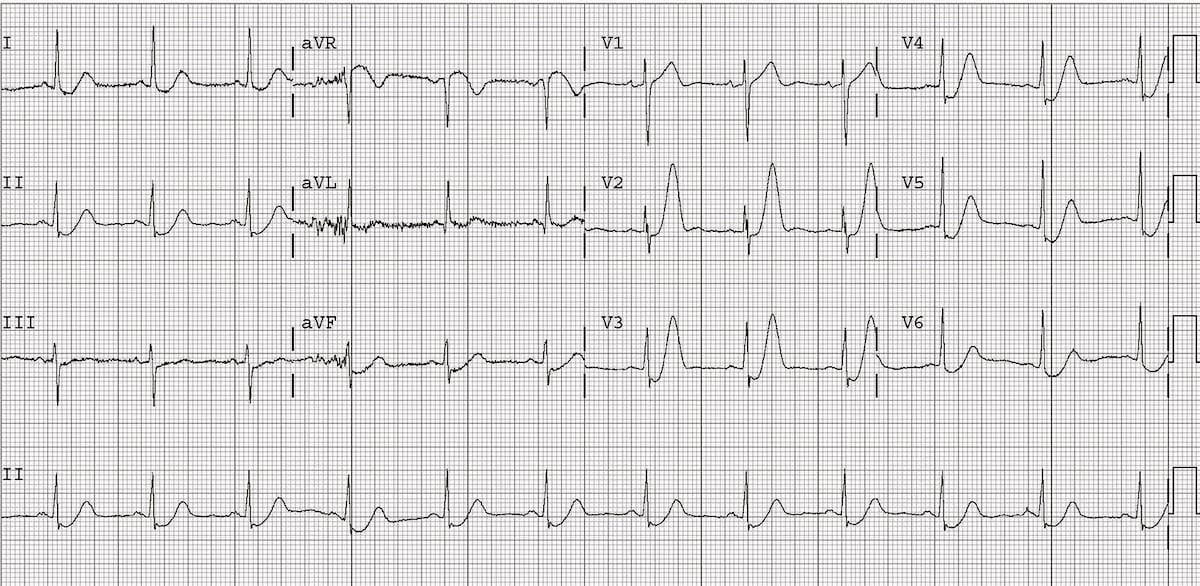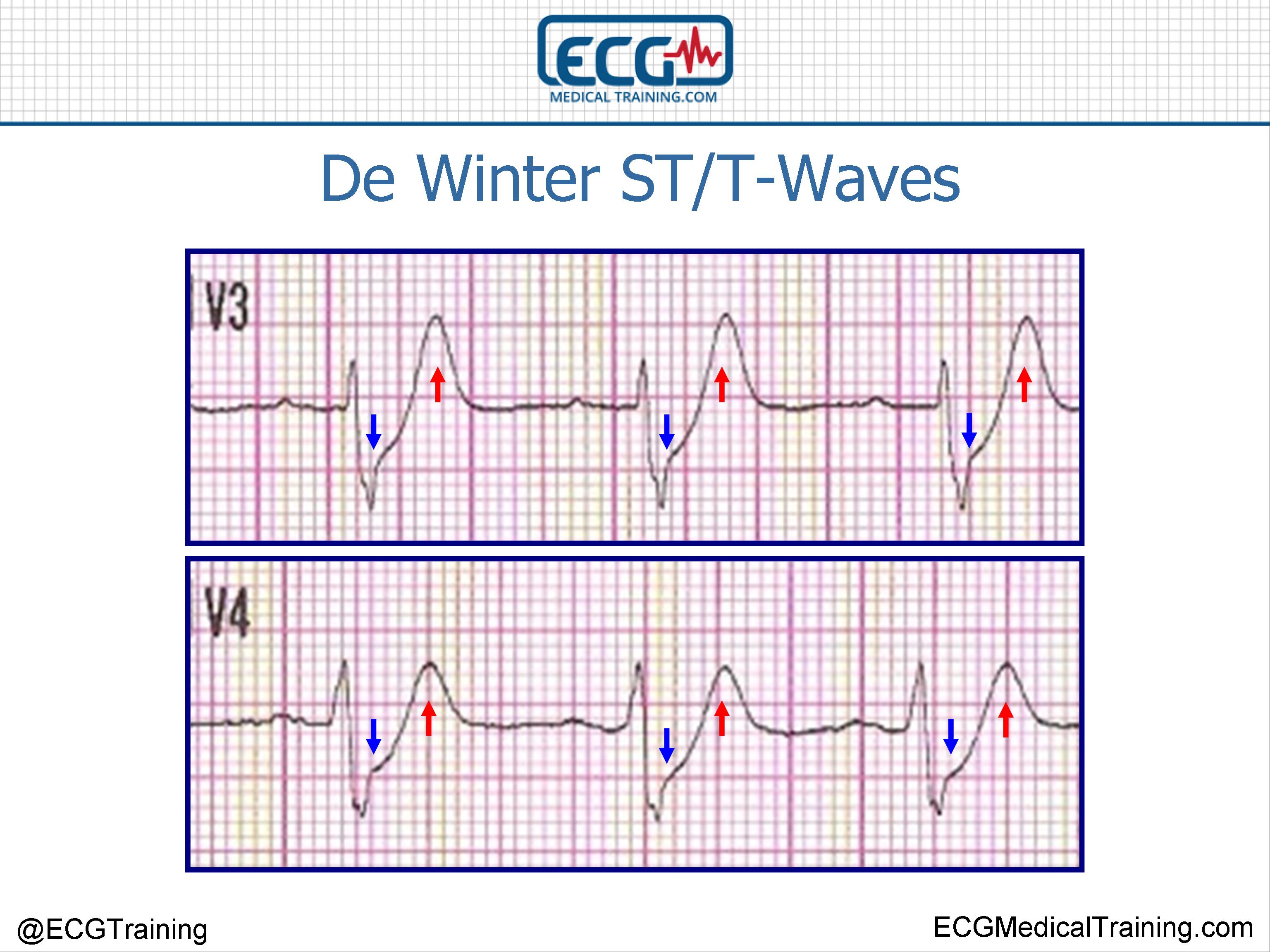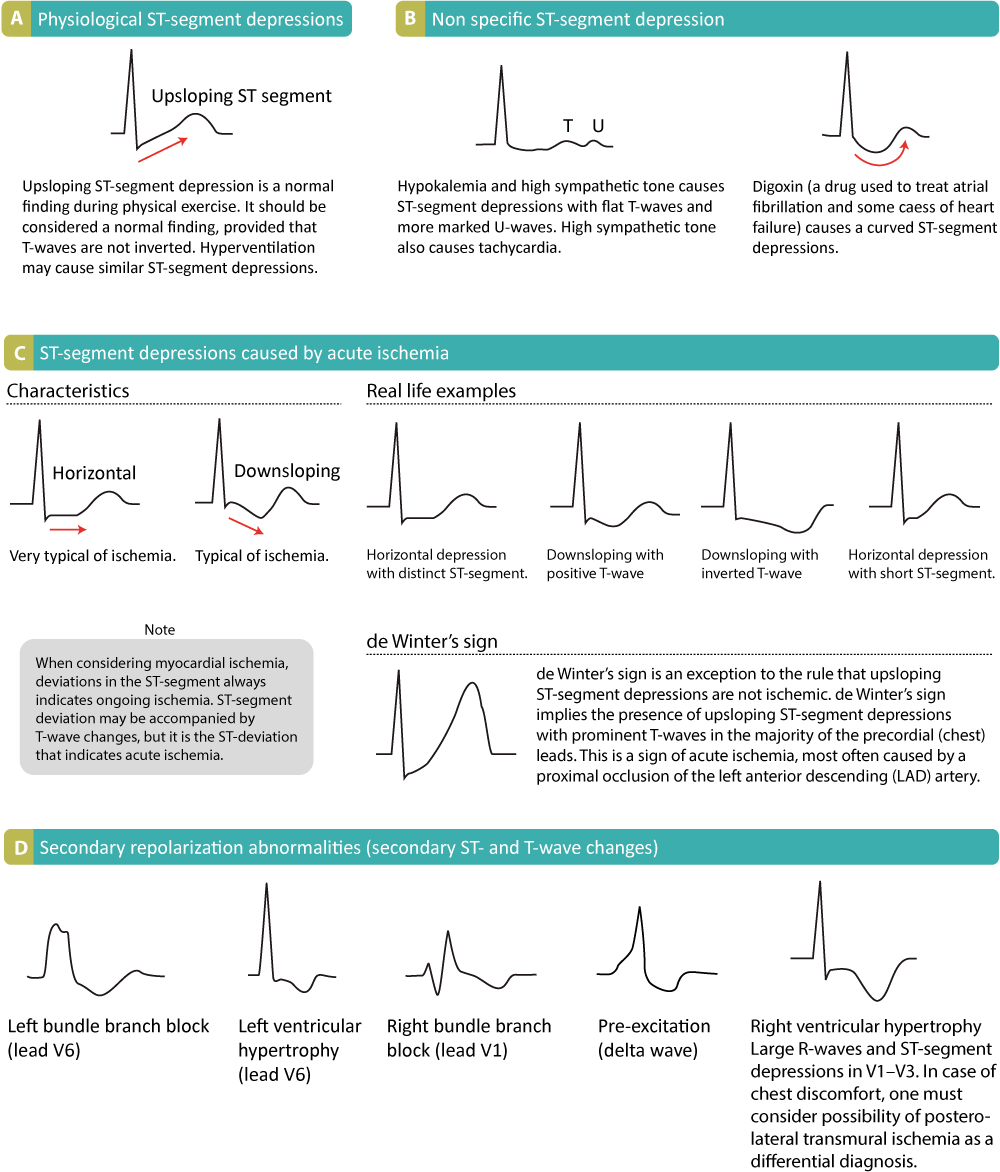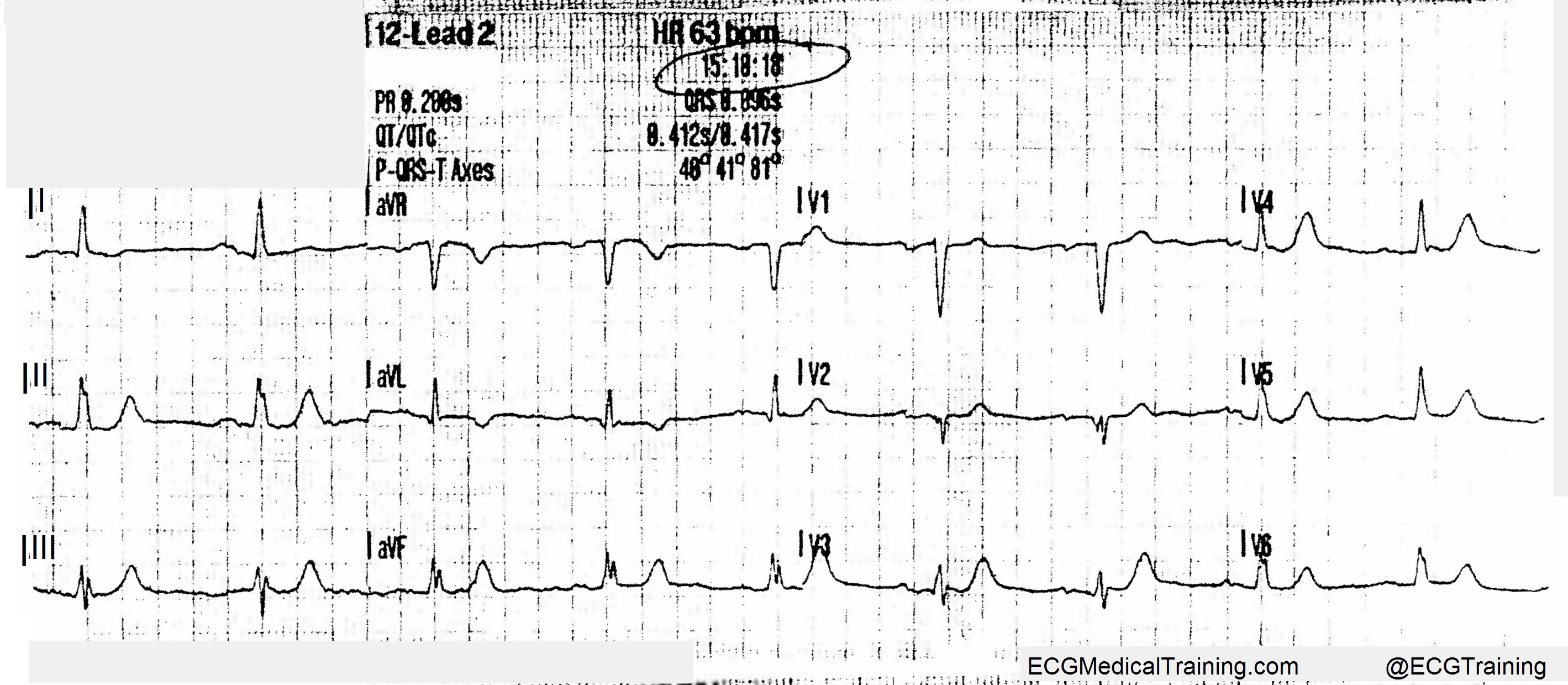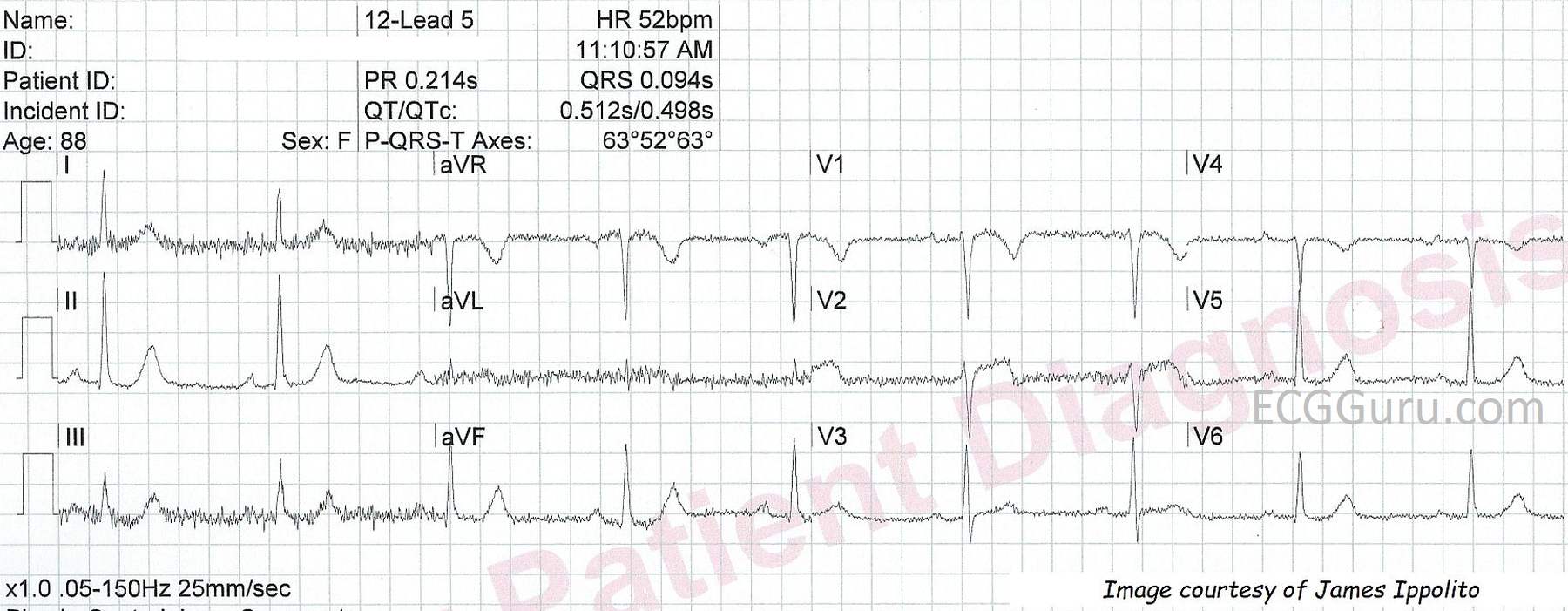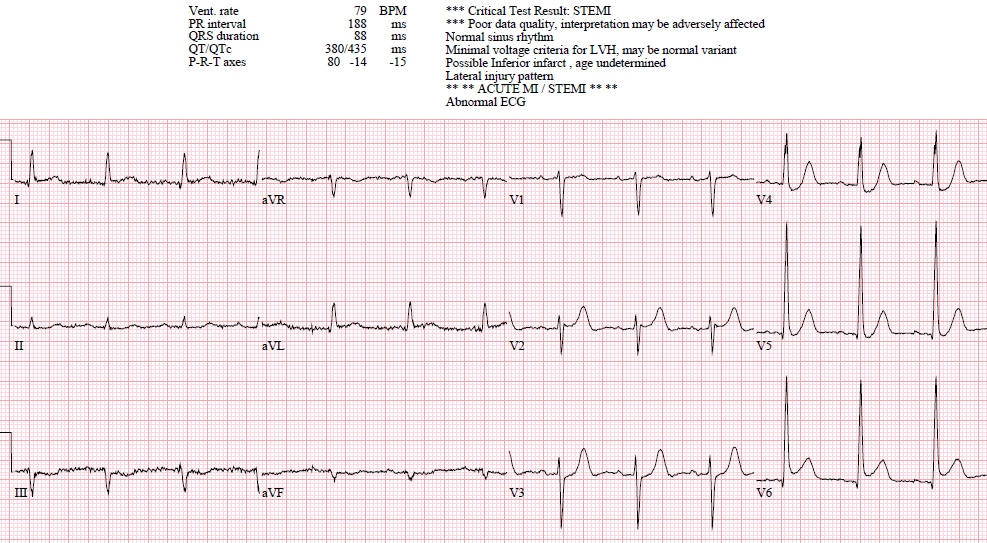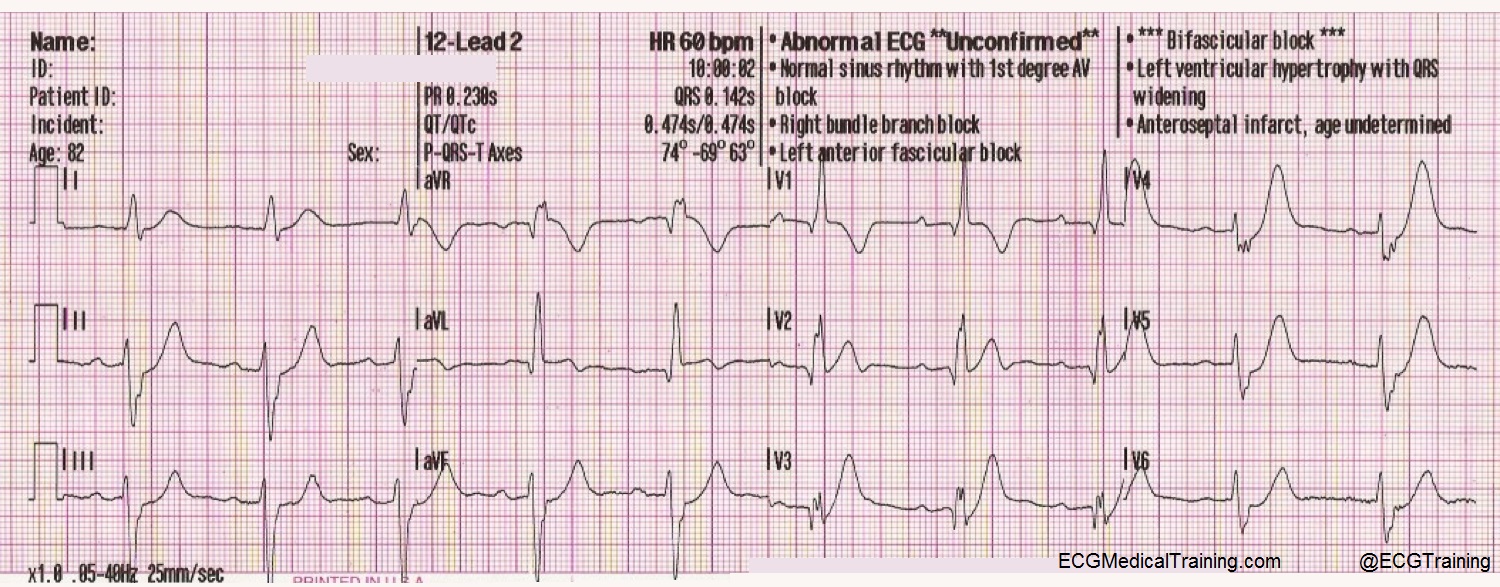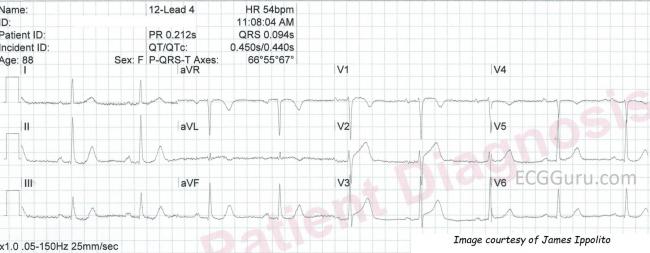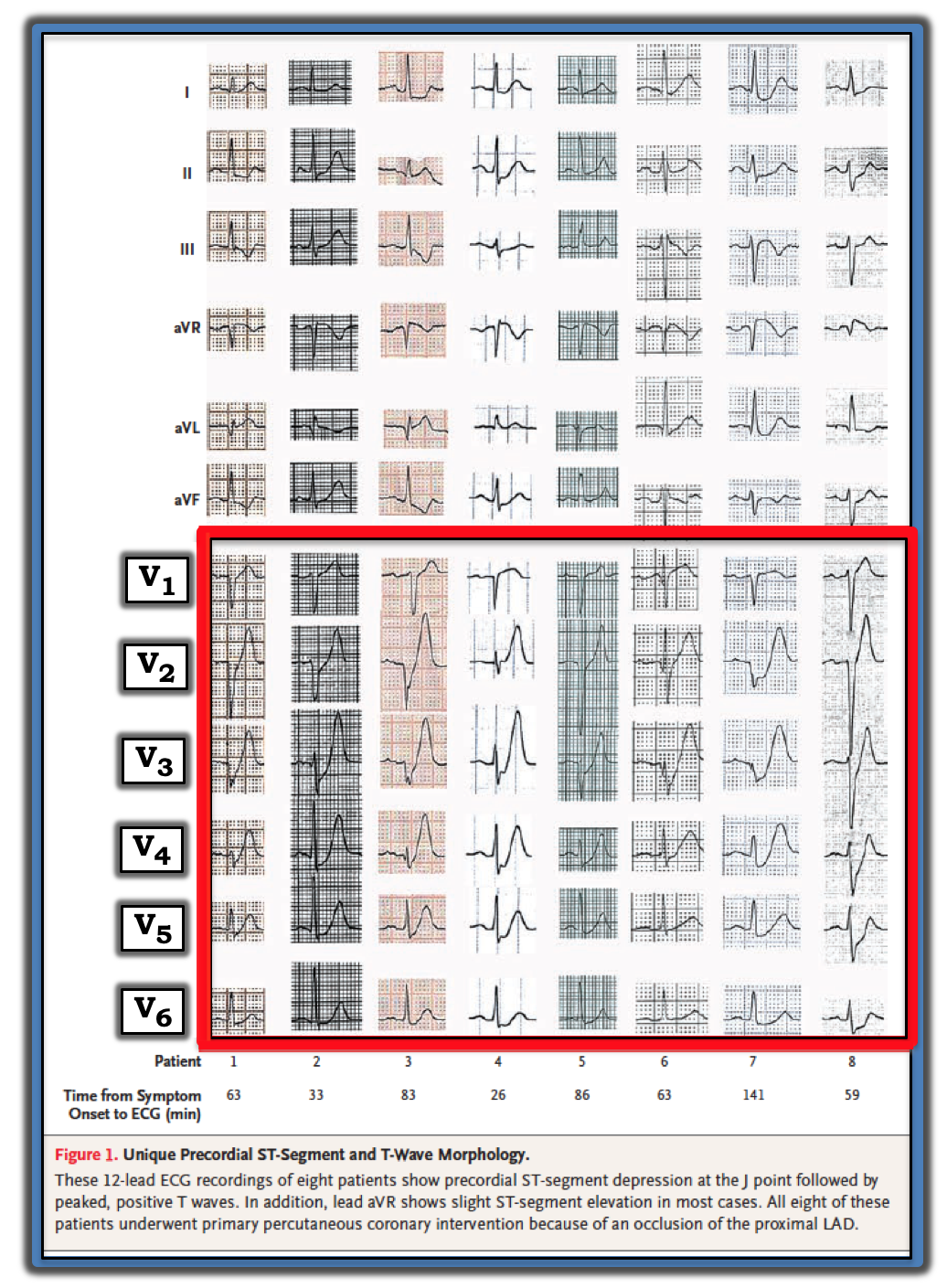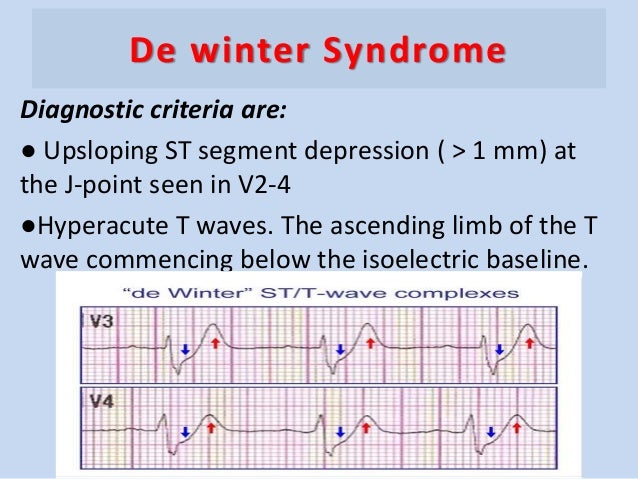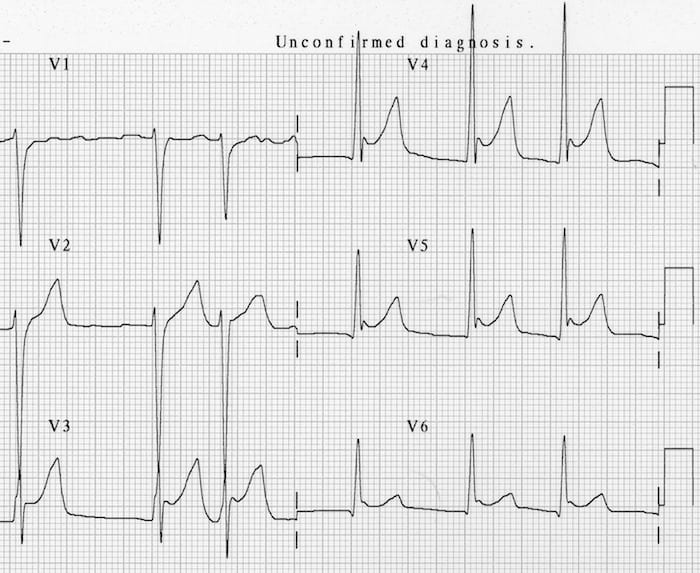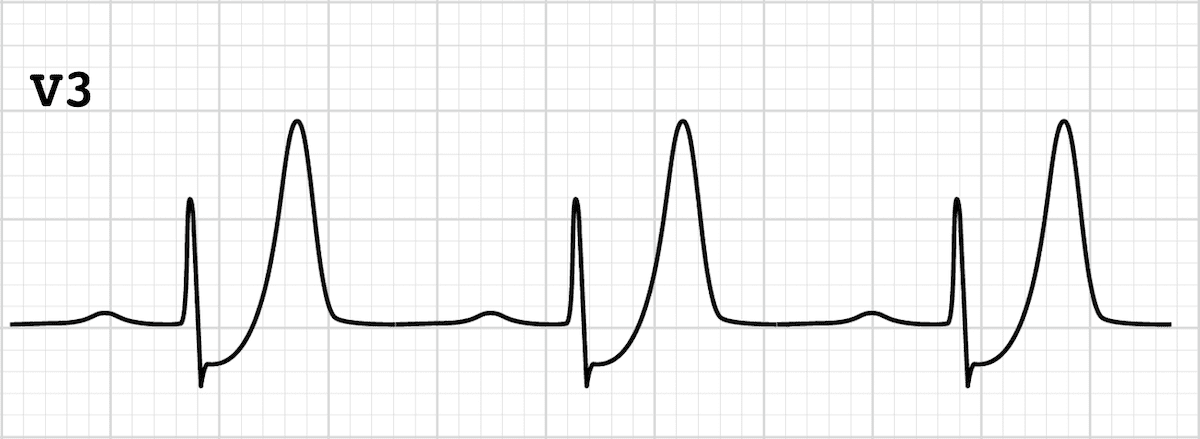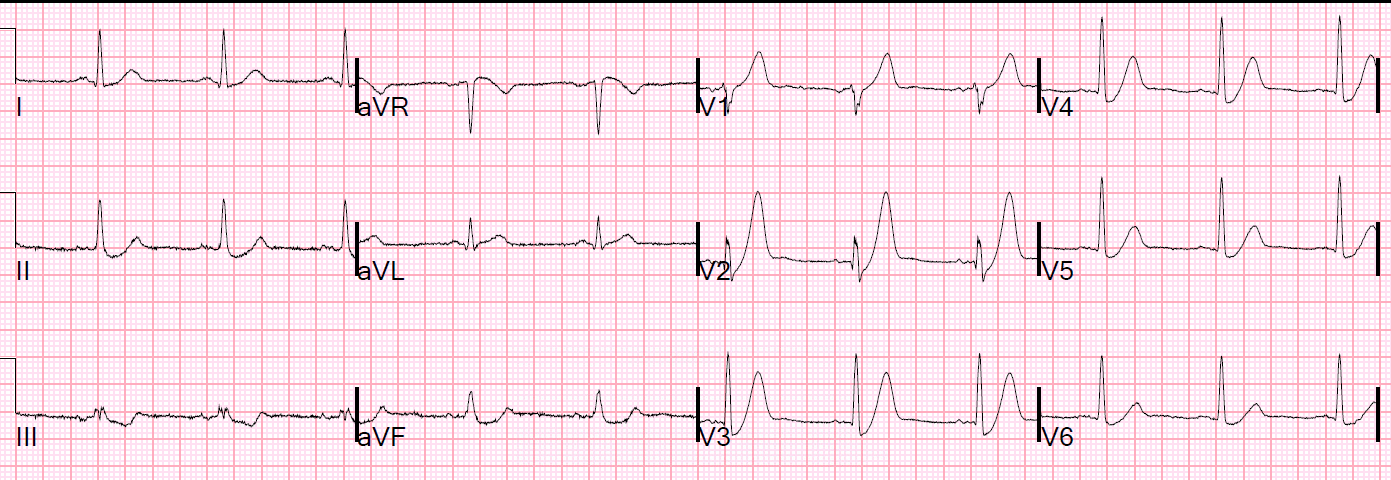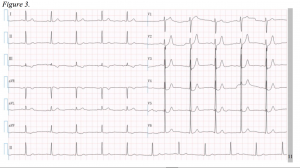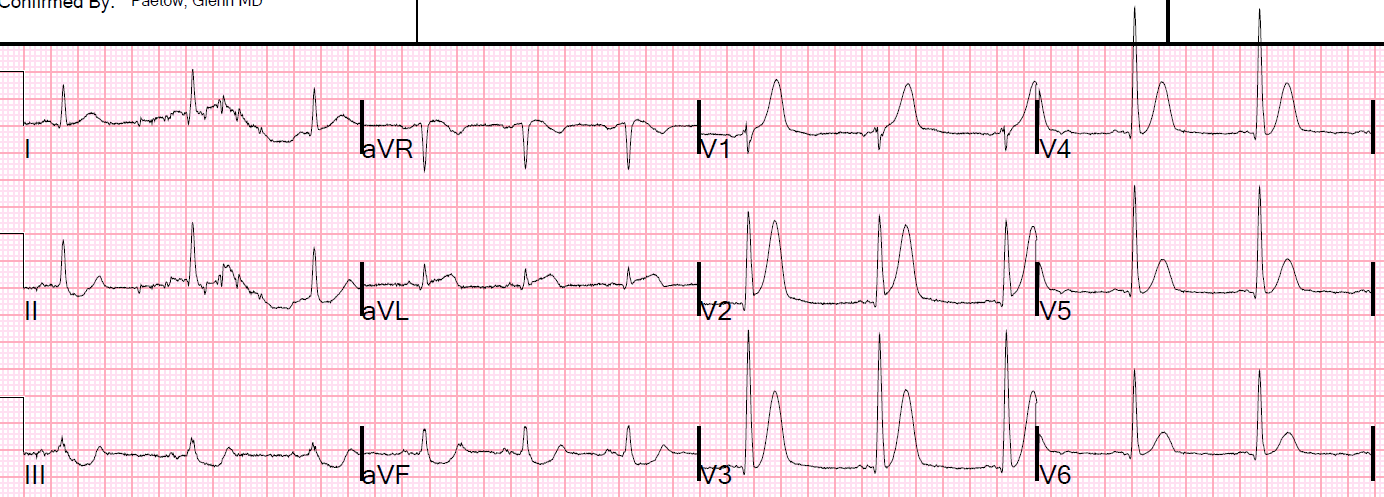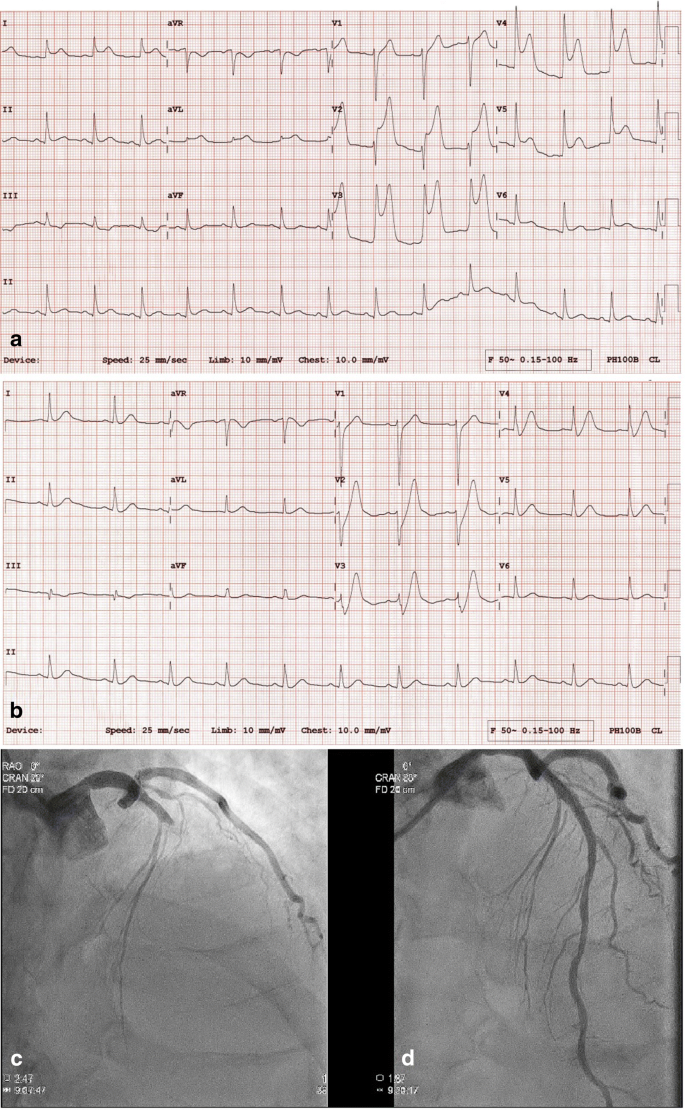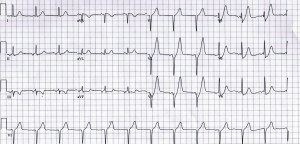De Winter T Wave
Key diagnostic features include st depression and peaked t waves in the precordial leads.

De winter t wave. Ecg abnormality described by de winter et al. De winters sign persistent hyperacute t wave syndrome as mentioned above hyperacute t waves have short duration. A new ecg sign of proximal lad occlusion. Earlier percutaneous coronary intervention pci reduces morbidity and mortality in myocardial infarction.
In 2018 one case report showed the case of de winter sign in a patient with left main coronary artery occlusion. Rokos i et al. This can be an early transient sign of myocardial injury. Appropriate cardiac cath lab activation.
Represents approximately 2 of lad occlusions. De winter r et al. Previously inverted t waves can appear normal and upright in the setting of acute vessel occlusion. The de winter ecg pattern is an anterior stemi equivalent that presents without obvious st segment elevation.
Changes are dynamic as you would expect with acs see example 3 below suspicious for proximal occlusion of the lad. The tall t waves associated with hyperkalemia are sharp pointy symmetric and have a narrow base. Timely recognition of this pattern is crucial. Optimizing electrocardiogram interpretation and clinical decision making for acute st elevation myocardial infarction.
Some authors consider this pattern to be an equivalent of anterior stemi2. There is one alarming exception namely de winters sign in which hyperacute t waves persist for hours and they are accompanied by st segment depressions with upsloping st segments. In addition the t waves are hyperacute tall broad and asymmetrical. De winter t waves represent lad occlusion a stemi equivalent requiring immediate revascularization.
Slight reciprocal depressions are seen in the inferior leads. This is known as pseudonormalization. An electrocardiographic finding suggestive of impending myocardial infarction the de winters pattern or de winters t waves describes an abnormality thought to be indicative of acute occlusion of the proximal left anterior descending coronary artery lad 2. Characterized by 1 3 mm of st depression with upright symmetrical t waves.
Since 2008 many cases have been reported of de winter sign t wave in the context of acute anterior myocardial st segment elevation myocardial infarction. Clinical significance of de winter t waves. Recognition of characteristic changes in an electrocardiogram ecg that are associated with acute occlusion of a coronary artery guides decisions regarding immediate reperfusion the.
